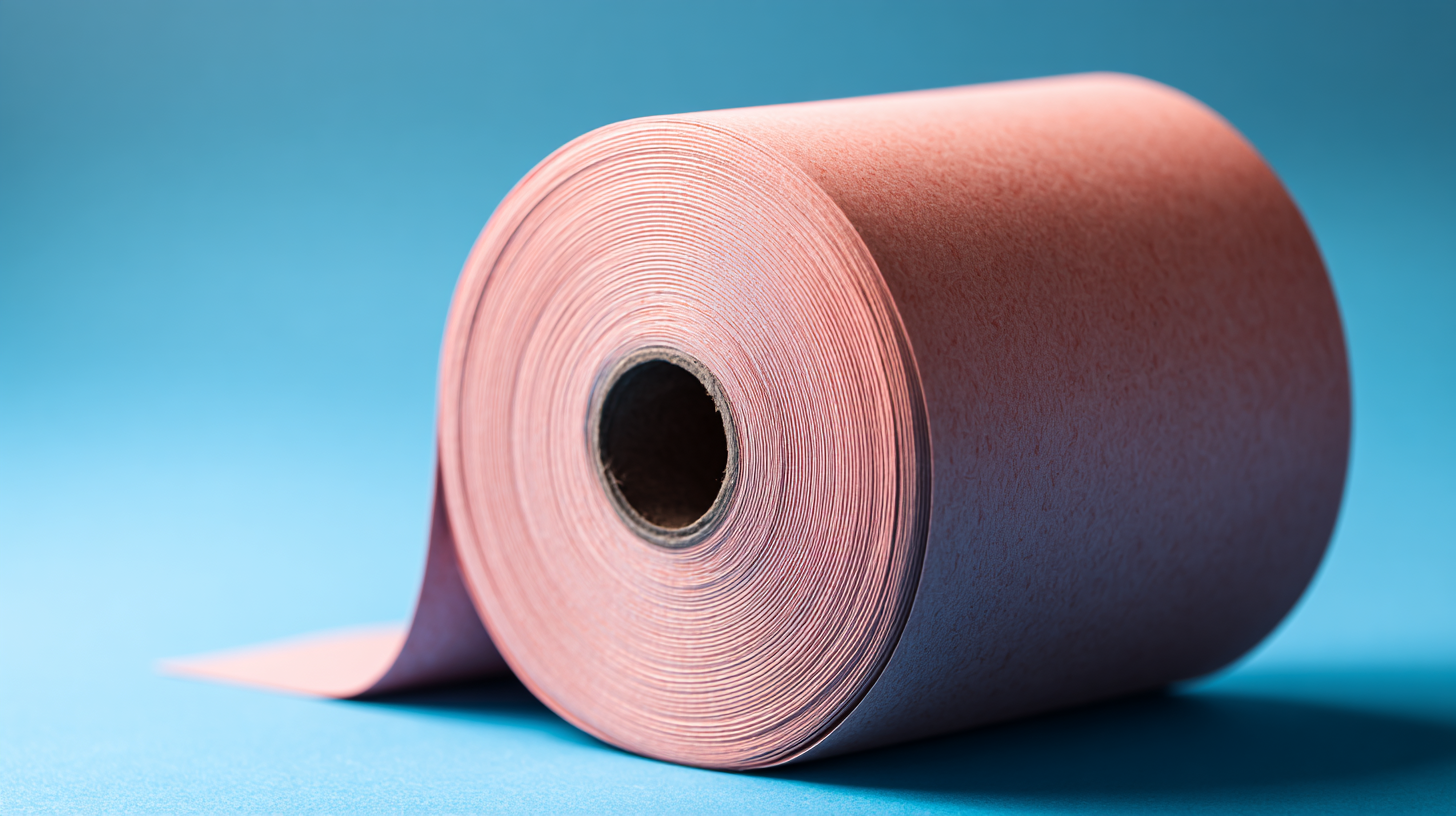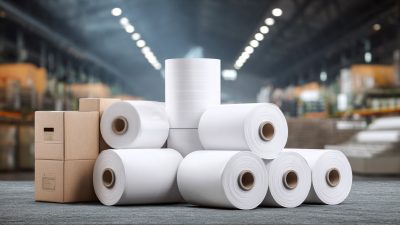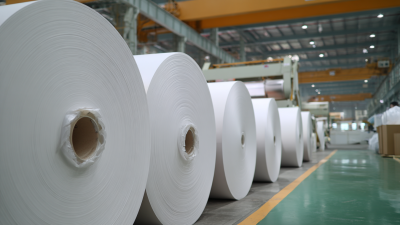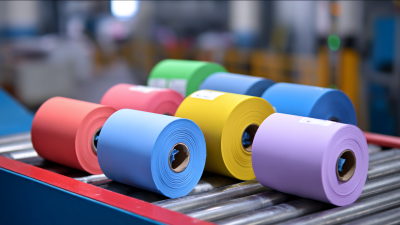In the fast-paced world of retail and services, choosing the right receipt paper is crucial for ensuring efficient transactions and maintaining customer satisfaction. According to a recent industry report by the National Association of Retail Merchants, over 70% of businesses reported that the quality of their receipt paper directly impacts customer perceptions of their brand. Moreover, the wrong type of receipt paper can lead to issues like ink smudging or fading, ultimately affecting record-keeping and operational efficiency.

As the market evolves with increasing technological advances, it becomes essential for businesses to understand the various types of receipt paper available—including thermal, BPA-free, and eco-friendly options. This guide aims to break down the key factors to consider when selecting receipt paper tailored to your specific business needs, ensuring you not only comply with regulatory standards but also enhance your customer's experience.
Choosing the right receipt paper for your business is crucial, as it impacts both customer satisfaction and operational efficiency. According to a report by Smithers Pira, the global market for thermal receipt paper is projected to reach approximately $5 billion by 2026, reflecting a significant growth driven by advancements in technology and increasing demand for efficient transaction processes. The type of receipt paper used can influence the durability and legibility of the receipts, which, in turn, affects customer retention and brand perception.

Moreover, using the appropriate paper type can also lead to cost savings in the long run. A study by the National Retail Federation highlights that retailers can reduce overhead costs by up to 20% by selecting high-quality thermal paper that minimizes jamming and maintenance issues. Additionally, sustainability is becoming increasingly important; many businesses are opting for eco-friendly receipt paper options that are not only better for the environment but can also appeal to a growing demographic of environmentally conscious consumers. By investing in the right receipt paper, businesses can enhance their operational efficiency while simultaneously catering to customer preferences and values.
Choosing the right receipt paper for your business is crucial for ensuring customer satisfaction and operational efficiency. When selecting receipt paper types, it's essential to consider factors such as paper quality, durability, compatibility with printers, and environmental impact. According to the 2022 National Association of Convenience Stores (NACS) report, nearly 30% of consumers said the quality of receipt paper was a critical factor in their overall shopping experience, highlighting the importance of making an informed choice.
One of the key factors to keep in mind is the type of printer your business uses. Thermal printers, for example, require specific thermal paper rolls, which can affect print quality and longevity. It’s also wise to consider the durability of the receipt paper, especially for businesses in food service, where spills and exposure to moisture are common. According to industry data, durable receipt paper can withstand these conditions without smudging or fading for up to six months, thereby reducing the need for reprints.
Tips: Always opt for paper that is compatible with your printing technology to avoid jams and misprints. Additionally, consider eco-friendly options, such as recycled paper, which not only supports sustainability but can also improve your brand image. Finally, assess your customer demographics; businesses catering to eco-conscious consumers may benefit from offering receipts printed on sustainable materials.
When it comes to selecting the right receipt paper for your business, understanding the three main types—thermal, bond, and carbonless—can significantly influence operational efficiency and customer satisfaction. According to a recent industry report by the International Paper Association, thermal paper dominates the market due to its ease of use and cost-effectiveness, accounting for over 60% of the receipt paper consumption in retail environments. This type utilizes heat-sensitive coatings, enabling quick printing without ink. However, thermal paper is sensitive to heat and light, which can lead to fading over time, a crucial consideration for businesses that require longer-lasting documentation.
On the other hand, bond paper is often favored for its versatility and print quality. This type of paper is compatible with various printing methods, including inkjet and laser, making it ideal for businesses that need to produce detailed receipts and invoices. According to data from the Paper and Paperboard Packaging Environmental Council, bond paper sales have been steadily rising, with a growth rate projected at 4% annually as businesses adapt to digital and physical record-keeping demands. Carbonless paper serves as an innovative solution for those needing duplicate copies without the mess of carbon sheets.
Particularly in the service industry, carbonless paper allows for efficient, clean copies of receipts or forms, contributing to an overall streamlined workflow.
Each paper type presents unique benefits and considerations, and understanding these differences is essential for making an informed decision that aligns with your business needs and operational goals.
The quality of receipt paper plays a crucial role in shaping customer experience and reinforcing brand image. When customers receive a receipt, it's often their last touchpoint with the business, which means it can leave a lasting impression. High-quality paper ensures that the printed text is clear and legible, reducing the chances of misunderstandings regarding transactions. A well-printed receipt reflects professionalism, suggesting that the business cares about the customer’s experience and the details of their transaction.
Moreover, using durable and aesthetically pleasing receipt paper can elevate the brand’s image. Businesses that opt for eco-friendly, sturdy, or uniquely designed paper not only demonstrate their commitment to quality but also promote sustainability, which resonates well with environmentally conscious consumers. A thoughtfully presented receipt reinforces brand values and encourages customer loyalty. In today’s competitive market, recognizing the significance of receipt paper quality is essential for creating a positive customer journey and fostering a strong brand identity.
When it comes to sourcing receipt paper for your business, purchasing in bulk offers significant cost savings and efficiency. According to a recent report by Smithers Pira, businesses can save up to 20% on paper costs by buying in bulk rather than opting for smaller quantities. Additionally, distributors often provide tiered pricing, incentivizing larger bulk orders, which can further reduce the per-roll cost.
Choosing the right supplier is crucial for maximizing these savings. A survey conducted by the National Association of Wholesaler-Distributors found that 68% of businesses that actively negotiated bulk purchase agreements reported reduced operational costs and increased supply chain stability. Factors such as product quality, delivery times, and customer service should also be considered when selecting a vendor. Leveraging these cost-effective strategies not only strengthens your budget but also enhances overall operational efficiency, allowing your business to focus on what truly matters—serving your customers better.







